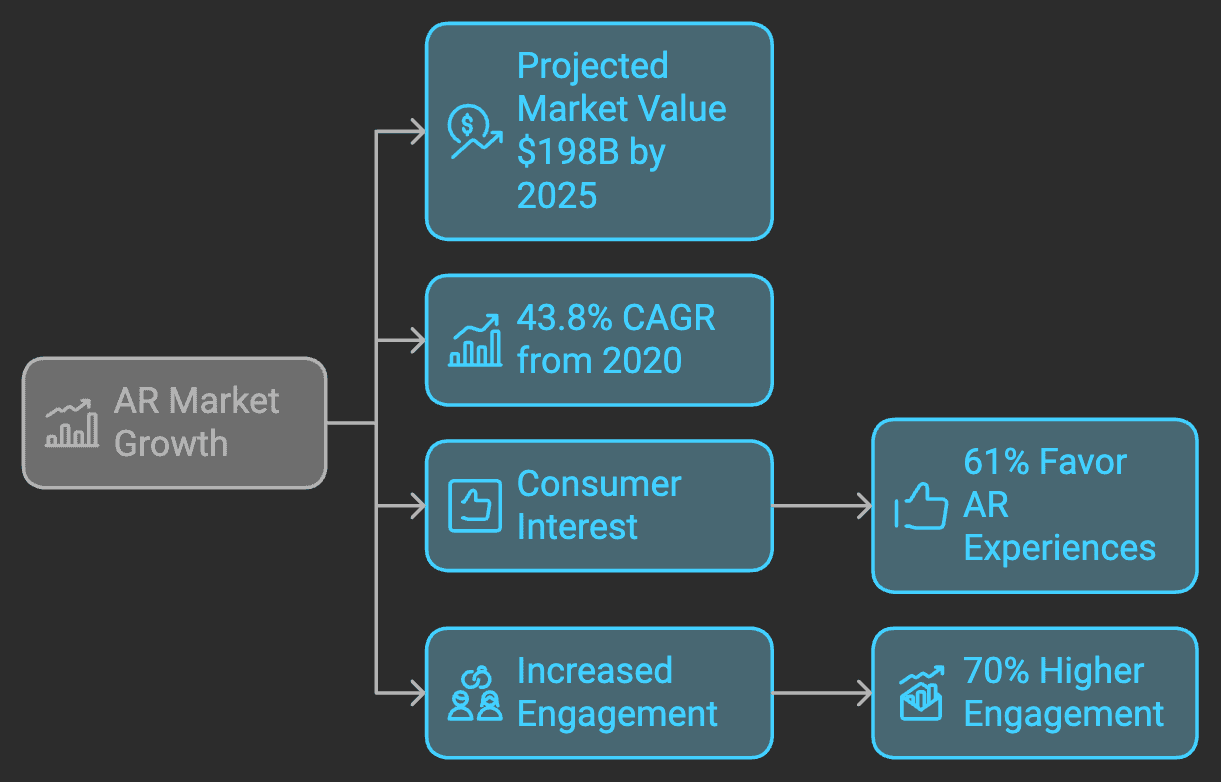Driving Brand Loyalty with Augmented Reality (AR) Experiences
In a rapidly evolving digital landscape, brands continuously seek innovative ways to engage customers and guarantee loyalty. One of the most promising technologies in this regard is Augmented Reality (AR) By combining digital elements with the real world, AR offers unique opportunities for brands to create memorable experiences that resonate with consumers. This Information explores how AR-driven loyalty programs and gamified experiences can cultivate long-lasting customer relationships.
Understanding Augmented Reality
Augmented Reality is a technology that overlays digital content—such as images, sounds, or information—onto the real world, enhancing the user's perception of their environment. Unlike Virtual Reality (VR), which immerses users in a completely virtual environment, AR allows users to interact with digital and physical elements simultaneously. This capability makes AR a powerful tool for brands looking to enhance customer engagement.
The Role of AR in Brand Loyalty
AR can play a pivotal role in building brand loyalty through several means:
Enhanced Customer Engagement: AR experiences can captivate consumers by providing interactive content encouraging exploration and participation.
Personalization: Brands can tailor AR experiences based on user preferences and behaviors, making interactions feel more relevant and meaningful.
Gamification: Incorporating game-like elements into loyalty programs can motivate customers to engage more frequently with the brand.
Effective Use of AR for Brand Loyalty
Creating Immersive Experiences
Brands can leverage AR to create immersive experiences that allow customers to interact with products in innovative ways. For instance, a furniture retailer could develop an AR app that enables customers to visualize how a piece of furniture would look in their home before making a purchase. This not only enhances the shopping experience but also reduces the likelihood of returns, fostering trust and satisfaction.
Implementing Gamified Loyalty Programs
Gamification involves integrating game mechanics into non-game contexts to encourage engagement. Brands can create loyalty programs that reward customers for completing challenges or engaging with AR content. For example:
Points Systems: Customers earn points for interacting with AR features, which they can redeem for discounts or exclusive products.
Challenges and Badges: Users can complete specific tasks within the AR experience to earn badges or unlock new levels, enhancing their connection to the brand.
Facilitating Social Sharing
AR experiences can be designed to encourage social sharing. By integrating social media features into AR applications, brands can motivate users to share their experiences online, increasing brand visibility and attracting new customers. For instance, an apparel brand could allow users to virtually try on outfits and share photos on social media platforms, generating organic buzz around their products.
Statistical Insights on AR Adoption
The adoption of augmented reality in marketing is on the rise, with significant implications for brand loyalty
Market Insights on Augmented Reality
Key Benefits of AR-Driven Loyalty Programs
Increased Customer Retention: By providing engaging experiences that combine with users, brands can significantly improve customer retention rates.
Enhanced Brand Perception: Innovative use of technology positions brands as forward-thinking and customer-centric.
Data Collection: AR applications can gather valuable data on consumer behavior and preferences, allowing brands to refine their strategies further.
Successful Implementation of AR in Loyalty Programs
Several companies across various industries have successfully implemented AR-driven loyalty programs:
Retail Sector: A cosmetics brand developed an AR app allowing customers to virtually try makeup products before purchasing. This not only enhanced user experience but also increased sales conversion rates.
Travel Industry: An airline introduced an AR feature in its mobile app that allowed users to explore destinations through virtual tours. This initiative increased customer engagement and loyalty among frequent flyers.
Food & Beverage: A beverage company launched an interactive packaging campaign where scanning the product label revealed fun games and rewards, driving repeat purchases.
Final Thoughts
As brands navigate an increasingly competitive landscape, embracing technologies like augmented reality will be crucial for fostering brand loyalty. By creating engaging experiences that resonate with consumers, brands not only enhance customer satisfaction but also build lasting relationships that drive long-term success.


Comments
Your comment has been submitted successfully!